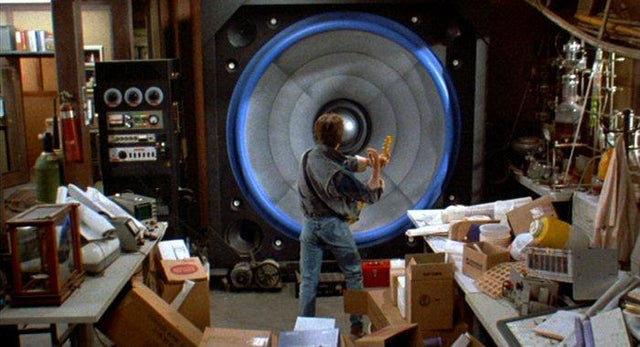Digital/Divide是我們的每月電子專欄。

10. Frankie Reyes: Boleros Valses y Más
With an Oberheim synthesizer as his instrument of choice, California-based artist Gabriel Reyes-Whittaker lovingly celebrates his Puerto Rican heritage by covering the music of an earlier generation. By ascetically limiting himself instrumentally, his pure-hearted interpretations of these twelve Latin American standards provide a more immersive listening experience than if he’d attempted to approach them more traditionally or with vocals. No mere novelty album, Boleros Valses y Más bursts with pride in his roots, with carefully curated song selections that originate across nations. Even stripped of its lyrics, Rafael Hernández Marín's “Lamento Borincano” retains its thematic potency. There’s a sort of wistful, somber quality that comes through on “Aquel Señor.” Even those who lack contextual familiarity with the originals can appreciate the Nintendo-reminiscent melodies of “Alma, Corazon y Vida” and “La Flor De La Canela.”

9. Slushii: Brain Freeze
As some of EDM’s biggest stars found even greater fame and fortune on the pop charts this year, some fresher faces took up residency in their vacated slots. While Diplo and Skrillex certainly didn’t disappear from the megaclub and festival business, newer entrants like Slushii built followings in line with theirs. For the Brain Freeze mini-album, the nascent dance music figure combined classic rave techniques with present-day bass drops and a certain accessibility. Chirping vocal manipulations, unpredictable BPMs and Eurodance excesses define a good chunk of the material, from the glossy “Make Me Feel” to the peppy “Statik Shock.” Slushii finds use for discarded dubstep on “Take My Hand” yet shows off a subtler side on the downtempo “Sapient Dream.” A standout of the set, “Destiny” merges Daft Punk style vox with post-trance trickery to make for a rather toothsome electro banger.

8. Tinashe: Nightride
The creeping influence of OVO Sound had considerable impact on the R&B conversation this year, with several of its artists getting album-length releases including dvsn, Majid Jordan, and Partynextdoor. These darker, electronic releases skew in a different direction than those of, say, last year’s late entrant D’Angelo or this year’s would-be December successor Childish Gambino. But that sound was best embodied by someone not actually signed to the Toronto braintrust. Following Tinashe’s 2014 full-length debut Aquarius and its hit single “2 On,” this digital-only mixtape release accomplishes artistically what Drake’s label could do if he wasn’t so afraid of girls. Freed from the crushing responsibilities of the commercial album format, she experiments on inventive tracks like the buzzing segue “Binaural Test.” Tinashe’s inviting voice floats over the insectoid funk rhythms of “Sacrifices” and the simply hypnotic “Sunburn” while still making room for prospective hits like “Ride Of Your Life.”

7. patten: Ψ
IDM no longer captivates the way it once did, its innovations and leftfield quirks now largely commoditized by other genres and subgenres thanks to advances in technology. Yet patten don’t seem particularly concerned about lazy narratives of relevance, opting instead to make the sort of incomprehensibly brilliant records you wish Aphex Twin still knew how to make. Characterized by the decaying, oblique transmissions of “Epsilon,” collapsing bass structures of “Dialler,” and the quasi-cinematic wonderment of “True Hold,” their latest album affirms the mysterious duo’s status as some of the foremost contemporary provocateurs operating in their label’s radical musical lineage. The fluffy jackhammering of "Pixação" and backwards masked pads of "Blade" explore compelling sonic contradictions. Detached vocals come and go, delivering cryptic messages and perhaps manifestos amid lush, if fleeting, productions like “The Opaque” and “Sonne.”

6. Terror Jr.: Bop City
Is social media star Kylie Jenner behind the extraterrestrial vocals of this buzzy studio project? Confirmed members Felix Snow and David Singer-Vine aren’t about to say. That sort of reveal would ruin their fun, something they’re clearly having a lot of across this lively set of exuberant, candy-coated trap pop tunes. In lesser hands, the studio concepts of Bop City would assuredly succumb to appropriation charges or otherwise crumble to dust, but Snow and Singer-Vine are above-average professionals with nimble fingers on Instagram influencer pulses. Sex positivity seeps from the digital falsetto of “Come First” and “Say So.” The drug of choice for moody dudes like the Weeknd and Travis Scott, xannies sound like positively wonderful prospect on “Little White Bars.” No matter who the secret singer is, she’s absolutely captivating to listen to.

5. Jesse Lanza: Oh No
This hip imprint made its proverbial bones with moody records of dystopian garage and dubstep from the likes of Burial and Kode9. In 2016, Hyperdub expanded its remit even further with solid outings from Fatima Al Qadiri and Dean Blunt’s provocative grime project Babyfather. Yet the label’s finest release this year has more in common with 1980s R&B than the twisted futurism propagated by much of its roster. Jesse Lanza’s joyful Oh No gently nudges late 20th century post-disco boogie bubblegum into an electro-pop album suitable for multiple generations. Perfect bubbly bytes of entertainment, the repetitious “Never Enough” and “VV Violence” prompt grooving fits. Slower numbers like “Begins” and “I Talk BB” offer respite from the physicality of the clubbier cuts without significant lessening their memorable nature.

4. DJ Marfox: Chapa Quente
Lisbon’s vibrant scene produced several projects worth consideration on a “Best Of 2016” roundup, including DJ N.K.’s DJ Do Ghetto and the Principe Discos artist compilation Mambos Levis D'Outro Mundo. As one of the most notable figures making these polyrhythmic kuduro-techno mutations, DJ Marfox’s Chapa Quente captures everything that makes this music so unique and riveting. The percussive fury and manic flute loops of “2685” kick things off right, offering an immediate dancefloor release and without a doubt one of the year’s best club tracks. That continues with the industrial hedonism of “Unsound,” a clanging thumper that twists and turns in unexpected directions, recalling both Surgeon’s English darkness and the carefree celebrations of Rio’s Carnivale. The liberating playfulness of the remaining tracks like “Kassumbula” and “Cobra Preta” make clear that Marfox operates at a higher level than most of today’s producers.

3. Marshmello: Joytime
Sure, the guy wears a ridiculous confectionary mask and postures like a choreographed goon onstage. Still, it’s hard to deny that the anonymous producer known as Marshmello has the Stay Puft testicles to keep EDM relevant. Love him or or hate him, his profile soared this year, relying on seemingly ceaseless gigging and a brand-conscious social media presence to give him a certain ubiquity in this community. If you can get past Marshmello’s cartoonish persona and the corresponding clutter, his dynamic album offers so much unbridled glee and maximum joy. He prods the conventions of dance music culture by keenly updating the stabby synth melodies of La Bouche and Real McCoy with ultramodern bass drops and intangibly euphoric flourishes. Such traces of old school uncool counterintuitively aid in making him cool, as evinced on the Eiffel 65-esque “Bounce” and “Find Me.” Like some of the finest Fools Gold or Mad Decent plates, a hip-hop sense sends “Blocks” and the trappy “Show You” through the roof.

2. ANOHNI: Hopelessness
In a tumultuous year marked by political divisiveness and boiled over racial tensions, the amount of protest music released felt surprisingly minute. Pop stars with platforms made at best winking accommodations towards cultural revolution or middle class populism, poses more befitting couture than current events. Even major label rapper’s YG’s pointed “FDT” wasn’t quite the “Anarchy In The U.K.” it perhaps ought to have been. A visionary collaboration from downtown torch singer turned indie powerhouse ANOHNI alongside acclaimed Warp producers Hudson Mohawke and Oneohtrix Point Never, Hopelessness gave booming voice to ecological distress, and the victims of drone warfare. Cutting, nihilistic, vitriolic, witty, antagonistic, and simply breathtaking, songs like “4 Degrees” and “Execution” tackle hot button issues with none of the nefarious lobbying found in our media. Though some cringing types dismissed Hopelessness for its unapologetically heavy-handed approach on “Obama,” the post-election mixed emotions on all sides around the discussion of his presidency gives credence to ANOHNI’s critical forethought.

1. The Range: Potential
One of the oldest criticisms levied against electronic music is that it lacks emotional heft. Obviously, those of us who have spent countless hours immersed in headphone listening or in sweaty, ecstatic communion on the dancefloor with friends and strangers know better. But as pop music continues to co-opt club trends and studio magic to give relevance to a revolving door of conventionally attractive talents of varying quality, our scenes continue to endure non-acceptance and disdain even as we face some of the most human tragedies that, out of sheer decency, ought to evoke empathy.
That particular human quality, our ability to relate to one another on levels both obvious and imperceptible, is something that drives Brooklyn-based producer James Hinton. He’s enamored with the ways in which we connect and interconnect, no doubt a byproduct of his education in the field of physics. For the raw material that built Potential, his latest and magnificent album as the Range, he spent untold hours on YouTube watching vocal amateurs and aspirants perform on camera. Hinton was searching for those empathetic opportunities, sometimes expressed in a brief sung phrase or lengthy series of rap bars.
Hinton took pains to get permission from everyone he sampled, and that pay-it-forward considerateness paid off. From these inspiring moments, he crafted evocative anthems, electronic epics in digestible miniature. On “Five Four” and “1804,” London grime and Jamaican dancehall gel with American pop and dance forms rather than clash. A mantra of the sad realities of drifting love, “Falling Out Of Phase” shines brightly, as do “Superimpose” and the poignant single “Florida.”
The very name Potential ought to be taken literally, because Hinton sees that titular quality in his collaborators and, hopefully, in himself. It is precisely the sort of record we need right now, one that combats stereotypes, bridges gaps, and exemplifies how the emotional depth of human experience can be conveyed via electronic music.
Honorable Mentions: Cakes Da Killa, Hedonism [Ruffinas] DJ NJ Drone, Syn Stair [Purple Tape Pedigree] FaltyDL, Heaven Is For Quitters [Blueberry] The Field,The Follower [Kompakt] Gaika, Spaghetto [Warp] Helado Negro, Private Energy [Asthmatic Kitty] Jubilee, After Hours [Mixpak] Mala, Mirrors [Brownswood] Thug Entrancer, Arcology [Software] VHVL, Evn [Leaving]
Gary Suarez 生於紐約市,長大並持續在此生活,為多家出版物撰寫音樂和文化的相關文章。自1999年以來,他的作品發表於包括福布斯、高時代、滾石、Vice及Vulture等多個媒體。2020年,他創立了獨立的嘻哈電子報和播客Cabbages。
加入俱樂部!
立即加入,起價44美元Exclusive 15% Off for Teachers, Students, Military members, Healthcare professionals & First Responders - Get Verified!







